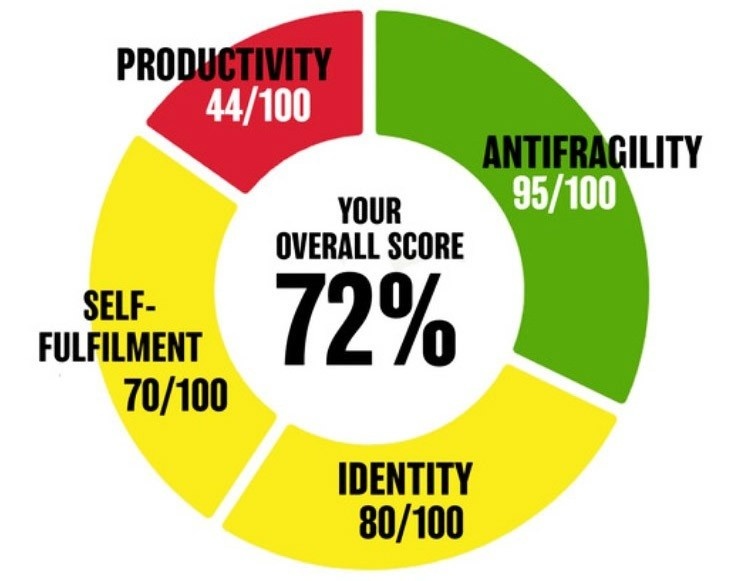SUMMARY
- Do you find the process of setting goals for your company great in theory, but not so great in practice? Perhaps you and your team set goals, but soon forget about them, or just don’t properly achieve them. Unless you master the process of setting goals, you could be taking years to do what could be done in weeks.
- If you simply master four simple principles, it will make the process of setting goals so much easier, instead of going from quarter to quarter without any goals, hoping that you’re going to hit the target – just like playing darts, blindfolded.
- The first thing you need is to power your goal setting process with an inspiring vision. A lot of times I’ll come across groups or teams or companies that have visions along the lines of “Become number one in our market” which isn’t going to inspire employees and customers. The vision needs to be bigger than the company.
- The second thing you need is a framework. Without a framework to support your goal-setting process, the goals you set will be unclear and ineffective. There’s lots of frameworks out there – from SMART goals to OKRs but as long as you pick one and stick with it, you’ll be moving your business in the right direction.
- The third thing that you want to do is push this process down to the team. So you define what you want to do, but you want the teams to define how they’re going to do it. Encourage them to brainstorm and think through how they’re going to achieve the key results for the various objectives that you might have set.
- The last thing that you need to have is clear communication rhythms. Make sure that there’s a quarterly rhythm to evaluating your progress for the last quarter and setting the new goals for the next quarter. You’ll also need weekly team check ins to set commitments and monitor progress on a more regular basis.
TRANSCRIPT
Do you find the process of setting goals for your company? Great in theory, but not so great in practice. Perhaps you and your team set goals, but soon forget about them, or they just don’t seem to be properly achieved, or worse yet, everyone wasn’t even properly brought into them. Unless you master the process of setting goals, you could be taking years to do what could be done in weeks.
Hi, I’m Eric Partaker. You probably think goal-setting is a difficult process when it’s actually quite simple. If you simply master a few principles – look, these are not principles that I mastered easily myself. They took me years to acquire, but the point here is that I want to accelerate your learning and get you on a path to deeper fulfillment for both yourself, your company, and your team, by highlighting the key things that are going to allow you to both accelerate from a goal-setting point of view, and ultimately to a results point of view, as you start hitting the things that you’re going for. Going from quarter to quarter without any goals is like playing darts, blindfolded, hoping that you’re going to hit the target.
If you just embrace four simple principles, it will make the process of setting goals so much easier. And the first thing that you need to do when it comes to goal-setting is make sure that your goal-setting process or your entire company is powered by a vision. So when I was helping build Skype in its very early days, our tagline was: “the whole world can talk for free”. And you can imagine the revolutionary spirit that created inside all of us – we knew we were doing the world good. We knew that we were serving a purpose that went beyond just the company, a lot of companies as a CEO coach and a peak performance coach for individuals.
A lot of times I’ll come across groups or teams or companies that have goals or visions along the lines of becoming number one in our market, or at least being within the top three within our market. That’s great, but that’s pretty self serving, right? Even the frontline – no crew members or staff within these companies are going to be genuinely inspired by the company being number one, or number two, or number three in its market versus six or five or eight, right?
It really suits the leadership quite well and the shareholders and the investors, but outside of that, it doesn’t have as much power. Whereas “the whole world can talk for free” with Skype really extended to everyone and even extended to our customers at the time. They were part of that mission. And I’ll give you another example. I built up a chain of Mexican restaurants in the UK called Chillingo. And our mission at Chillingo was to make the world a more vibrant place. We existed to add flavor to people’s lives, and to brighten up their days. Now that’s a much more inspiring vision and mission than becoming the number one Mexican food brand.
Having a vision that extends beyond the company; that extends beyond the team; that encapsulates the positive impact that you’re trying to have in the world; that’s the first step for a really sound goal-setting process, because you want to be tying everything back into that. How is this helping us? For example, in the Skype reference, “get the whole world talking for free”. How is this helping us make the world a more vibrant place? How is this insert, whatever it is that you and your team are working towards, make the world a better place, at least for a person or a group of people. The second thing that you really need for a great goal-setting process is you need to have a framework.
There are a lot of frameworks out there. You can use SMART. The SMART system is a goal-setting process. My personal favorite is OKR – objectives and key results. It’s really, really simple. The objective is what you want to achieve. The key results are how you’re going to do it. So, as a quick example, if you wanted to grow sales, that’s the objective. Then the key results could be the increased price of the products. The second key result could be drive transactions. Another key result could be to open a new geography. Another key result could be to add new payment methods. All of these things are how you’re going to achieve the objective of growing the sales, but you need to have some type of framework, whether it’s OKR, or if you just want to use a traditional SMART goal-setting process, have something.
Speaking of the SMART goal-setting process, even when it comes to OKR, there are elements of that process that you need to have a presence within. OKR as well. So for example, every overall objective and key result needs a clear owner. It needs a clear deadline. And you also need to think about, what are the obstacles that are likely to get in the way of that key result? So of that goal that you’re working towards – encourage the team to think in advance, what are the likely things to get in the way and what are the plans that we could develop for each of those obstacles? Last but not least, you want to create some positive momentum with your goal framework, by making sure that at the end of setting your goals, you’re encouraging the team and yourself to think through what are the next, very next actions that we can take to start generating some positive momentum.
Now, the third thing that you want to do is really push this whole process down to the team. So you define what you want to do, but you want to be defining how they’re going to do it. Encourage them to brainstorm and think through how they’re going to come up with the key results for the various objectives that you might have set. If you’re using the OKR process, encourage them to schedule the time to do the brainstorming around what the goals are. Who’s going to own them, what the deadlines are. If they’re not involved in the process, then they’re not going to be fully bought in as well.
And then the last thing that you need to have is clear communication rhythms. One is make sure that there’s a quarterly rhythm to both evaluating your progress on the company goals for the previous quarter, and then setting the new company goals for the next quarter, and then pushing down those overarching goals to the teams to make sure, as I said, that they are deciding for themselves, at least in the first instance, how they’re going to be contributing to making all of these overarching company goals happen on a weekly basis.
You need to be meeting up as a team and then traffic-lighting your progress on the goals. What I mean is each member of the team who’s present in the meeting is saying whether they’re green, yellow, or red on the parts of the goals that they’re responsible for, so that there’s this constant public scoring and accountability, and this check on progress.
So, in summary, goal-setting for you and your company isn’t nearly as complicated as it’s made out to be. Make sure that you’re powering the entire process with a vision that really matters, that goes beyond the company, that’s not just self serving the company, its leadership and its shareholders – use that to power your goal-setting process, make sure that your goals can tie back into that so that you can say, this is how these goals relate to the overarching thing, the positive impact that we’re trying to create in the world.
The next thing is to have a framework for your goal-setting process. So whether you use OKR or just traditional SMART goal-setting, make sure that you have a framework to guide the way in which the goals are created and structured. Number three, make sure you’re pushing that down to the teams to get them to contribute in the co-creation process. And last but not least, make sure that you have some sound communication rhythms that underpin all of this as well.




